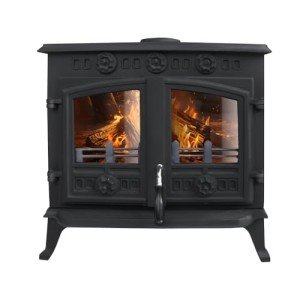The People Who Are Closest To Contemporary Multi Fuel Burner Share Some Big Secrets

Understanding Contemporary Multi-Fuel Burners: A Comprehensive Guide
In the quest for sustainable heating options, contemporary multi-fuel burners have actually emerged as versatile gadgets that allow property owners and businesses to maximize readily available fuels. These burners can efficiently use various fuel types, consisting of wood, coal, pellets, and more, making them an attractive option for those wanting to boost their heating capabilities while decreasing their carbon footprint. This post will check out the functional principles, benefits, setup factors to consider, and the future of contemporary multi-fuel burners.
What is a Multi-Fuel Burner?
A multi-fuel burner is a type of heating gadget designed to burn different fuel types while keeping performance and security. Unlike standard wood stoves or coal burners, contemporary models are engineered to adjust to various fuels, enabling users to select the most economically and ecologically practical choice based upon their accessibility or market rates.
Key Features of Contemporary Multi-Fuel Burners
- Adaptability: Can burn several types of fuels.
- Effectiveness: Designed to optimize combustion efficiency throughout different fuels.
- Eco-Friendly: Reduced emissions when utilizing renewable resource sources.
- User-Friendly: Often geared up with advanced controls for easy operation.
| Function | Description |
|---|---|
| Fuel Types | Wood, coal, pellets, and more |
| Heat Output | Generally ranges from 5kW to 12kW |
| Control Systems | Handbook or automated temperature control |
| Emissions | Low PM and CO emissions |
| Upkeep | Routine cleaning and occasional maintenance |
Advantages of Using Contemporary Multi-Fuel Burners
- Cost-Effectiveness: Utilizing more affordable fuel sources can considerably lower heating expenses.
- Environmental Impact: More effective burning of fuels can lead to minimized greenhouse gas emissions, adding to cleaner air.
- Fuel Availability: Users can pick their fuel based upon regional schedule, enabling versatile heating solutions.
- Resilience: In times of fuel scarcities, the capability to switch to renewable fuels guarantees a constant heating supply.
Potential Fuel Sources
- Biomass (e.g., Wood pellets or chips)
- Coal (e.g., Anthracite, Bituminous)
- Electricity (for extra heating)
- Natural Gas (in hybrid designs)
Installation Considerations
Installing a contemporary multi-fuel burner needs cautious planning and adherence to safety and regulatory standards. Secret considerations include:
- Location: Placement must guarantee appropriate ventilation and heat circulation.
- Chimney System: An appropriate chimney is essential for sufficiently venting smoke and gases.
- Clearances: Must fulfill particular clearance requirements to walls and furniture.
- Fuel Storage: Adequate space must be designated for keeping various fuels.
Installation Steps:
- Site Assessment: Evaluate the space for the very best positioning.
- Choose the Right Model: Select a model fit for the desired fuel types and heat requirements.
- Expert Installation: Engage a qualified specialist for installation to ensure compliance with regional structure codes.
- Security Checks: Once set up, conduct extensive security examine the system and exhaust.
Maintenance and Care
Keeping a multi-fuel burner is important for efficiency and security. Routine maintenance regimens should include:
- Routine Cleaning: Remove ash from the combustion chamber and flue for efficient burning.
- Examination: Regular look for wear and tear in the burner system.
- Chimney Sweeping: Annual chimney cleaning is important to avoid fire risks.
Future of Multi-Fuel Burners
The future of multi-fuel burners looks appealing as developments in technology continue to improve performance and decrease emissions. Developments such as automated fuel feeding systems and smart technologies are being integrated, allowing for much better control and monitoring of heating unit.
Additionally, government rewards and programs supporting eco-friendly energy usage are most likely to increase the adoption of multi-fuel burners among eco-conscious customers and services. The continuous research into even cleaner combustion approaches reflects a considerable shift towards sustainable heating practices.
Regularly Asked Questions (FAQs)
Q: Can I utilize any kind of fuel in a contemporary multi-fuel burner?A: No, it is necessary to describe the maker's standards on suitable fuels for optimal efficiency and safety. Wood Burning And Multi Fuel Stoves : Are multi-fuel burners efficient?A: Yes, when properly
set up and kept, multi-fuel burners can achieve high combustion effectiveness and produce lower emissions than standard single-fuel systems. Q: How frequently need to I perform maintenance on my multi-fuel burner?A: It is recommended to conduct routine cleaning after each usage and carry out a thorough evaluation a minimum of when a year
. Chimneys should also be swept every year. Q: What type of fuel offers the very best environmental benefits?A: Biomass fuels, such as wood pellets, normally provide substantial ecological benefits
when sourced sustainably, as they are sustainable and can have a lower carbon footprint compared to fossil fuels. Contemporary multi-fuel burners represent an ingenious service for sustainable heating in today's eco-conscious landscape. Their versatility enables users to select from various
fuel sources, making sure both economic and ecological benefits. Proper setup, maintenance, and adherence to safety requirements are necessary to maximize the capacity of these systems. As innovation progresses, the future of multi-fuel burners promises even higher effectiveness and lower emissions, making them an appealing option for residential and commercial heating requirements.

